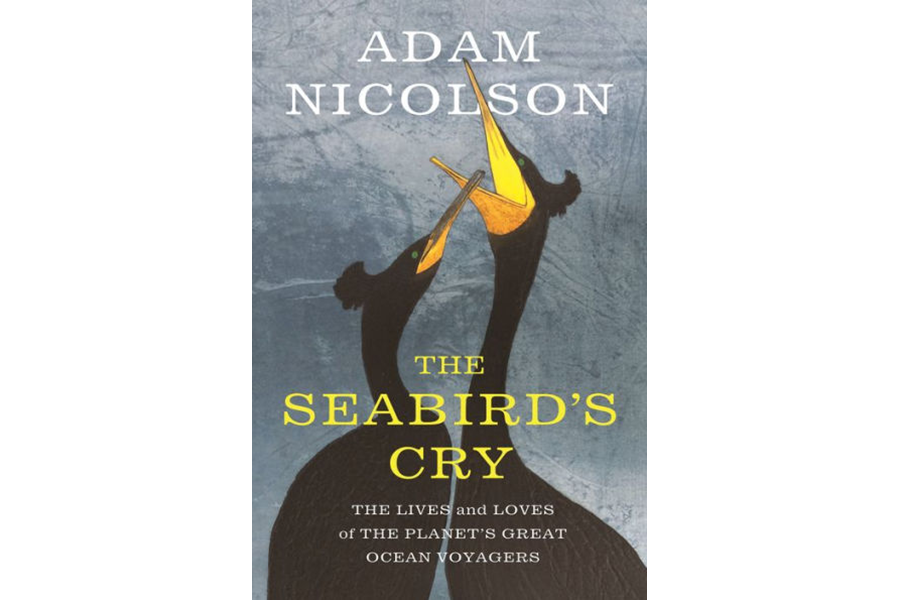'The Seabird's Cry' follows the 350 bird species inhabiting the coastlines and open oceans of our planet
Loading...
When a big storm is running in the cold wastes of the Southern Ocean between the Cape of Good Hope and the continent of Antarctica, even very large sailing vessels can feel like weightless children's toys. The wind is a constant, flattening roar, and the sea becomes an undulating range of green-water mountains, their foam-furred tops taller than the tallest mast of even the biggest ship. The air on deck becomes a howling wash of frozen spray; hands don't work, layers of insulation mean nothing, eyes rime shut, and mere survival shrinks to minute-by-minute desperate tasks. On a smaller vessel, a storm in those latitudes can seem like a frantic, prolonged end of the world, with all hands unable to spare more than a glance from the tasks that keep the ship alive.
Even in the loudest, darkest storms, those quick glances can yield a quick flash of pure wonder: gliding directly over the heaving face of the waters, soaring up the face of swells and silently disappearing behind them, a ghost – an albatross, pure white, with a wingspan of 10 feet, angling and banking so perfectly with the winds and waves that at first it seems an impossible thing, and then afterwards even more impossible. How could anything live in such an icy, screaming chaos, hundreds of miles from even a bare rock of ground?
These are the world's seabirds, the subject of Adam Nicolson's captivating new book The Seabird's Cry: The Lives and Loves of the Planet's Great Ocean Voyagers. Nicolson, the author of 2014's excellent "Why Homer Matters"; a 2008 book about Sissinghurst, the ancestral home of his family (Nicolson is the grandson of Vita Sackville-West, famously associated with Sissinghurst); a solidly entertaining 2001 history of the King James Bible called "God's Secretaries"; and many other works. He is one of the publishing world's most reliably entertaining polymaths, and in this latest book, he turns his attention to the 350 bird species (out of roughly 11,000) that have colonized the windswept coastlines, raw rock outcrops, and open oceans of the planet, what Nicolson calls the “strange and ambivalent, half-actual world: half material, half ghostly, half part of our life, half from another realm.”
Nicolson's book ranges from the west coast of Ireland, Orkney, Shetland, the Faeroes, Iceland, Norway, the Canaries, the Azores, and other godforsaken places, looking at 10 kinds of sea birds, including fulmars, puffins, kittiwakes, gulls, guillemot, cormorants, shearwaters, gannets, razorbills, and of course the albatross, which can live 60 or 70 years and spends most of that time far, far from land.
It's a completely pitiless world, in which the attrition of natural predation is increased exponentially by the harshness of the environment. The more time seabirds spend out on the water, the less time they spend doting over their young; “the world of the seabird is a universe of mystery, beauty and wonder; it is not, beyond the necessary parental duties, one of care,” Nicholson writes. “The cruelty and violence can sometimes be so pervasive that gull existence looks like a version of hell, one in which goodness does not have a part to play.”
And yet throughout "The Seabird's Cry," Nicolson regularly offers a narrative counterpoint to that hard world. He travels to the places where these strangest of all birds make their homes, and he does what all the best natural history writers do: he conveys to his readers the immediacy of these creatures. He goes to an extensive network of puffin burrows, for instance: “Dare to put your hand down a burrow early in the season,” he writes, “and you will meet either a fierce, blood-drawing bite or magically, if the parents are away, the mysterious warmth of the egg, buried in the dark, resting in its shallow nest of grass, set up above the damp and slime of the burrow entrance, the shell at body-temperature on the tips of your fingers, an embryo in the earth-womb.”
Habitat loss and rampant over-fishing by humans on all the world's oceans have combined to endanger many of the world's seabird populations, and a strong note of conservation runs through "The Seabird's Cry." But the book is in main part a celebration of these strange and marvelous beings and the forbidding places they call home.








